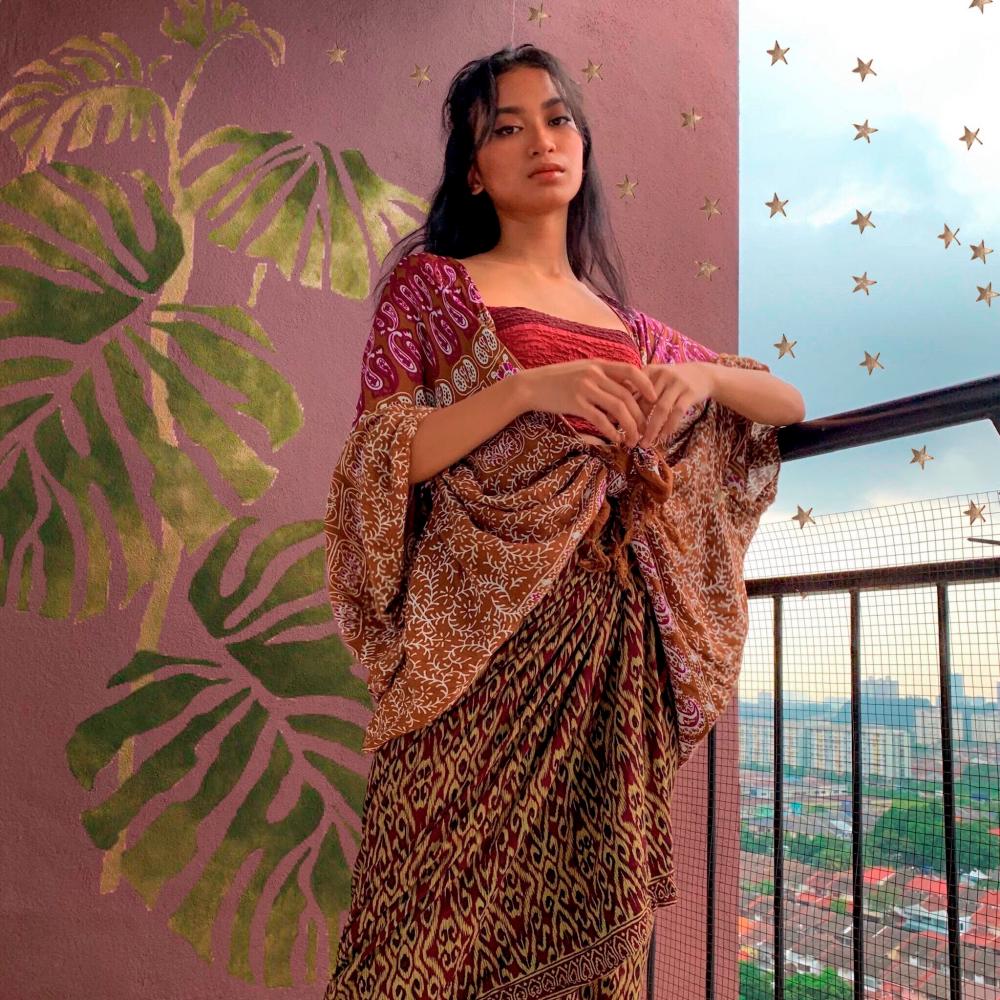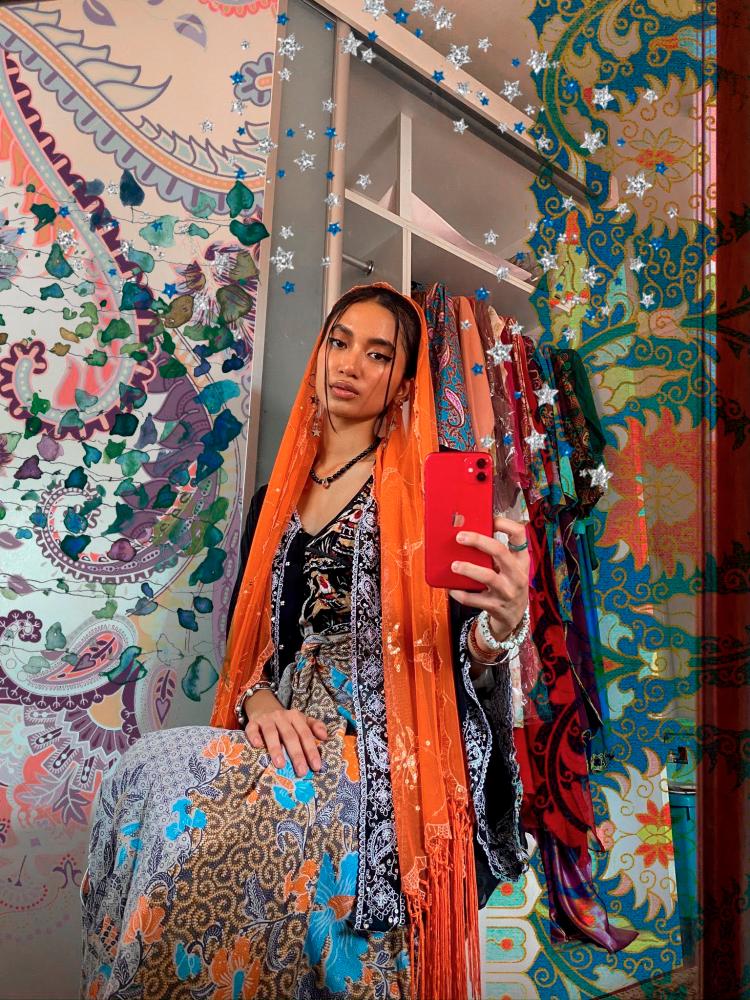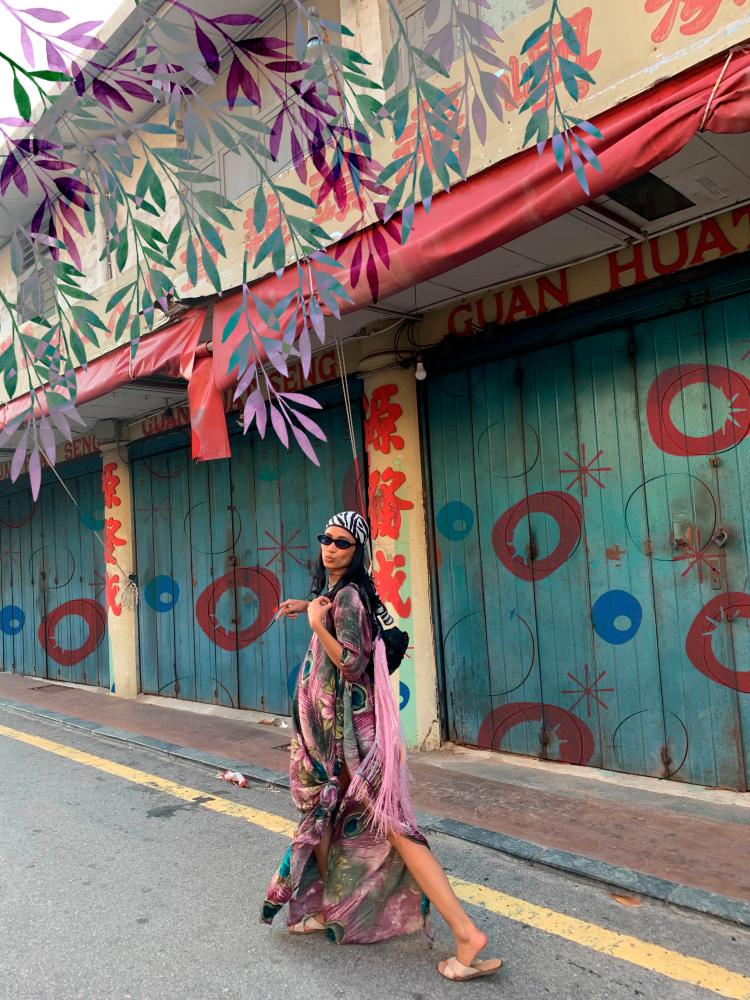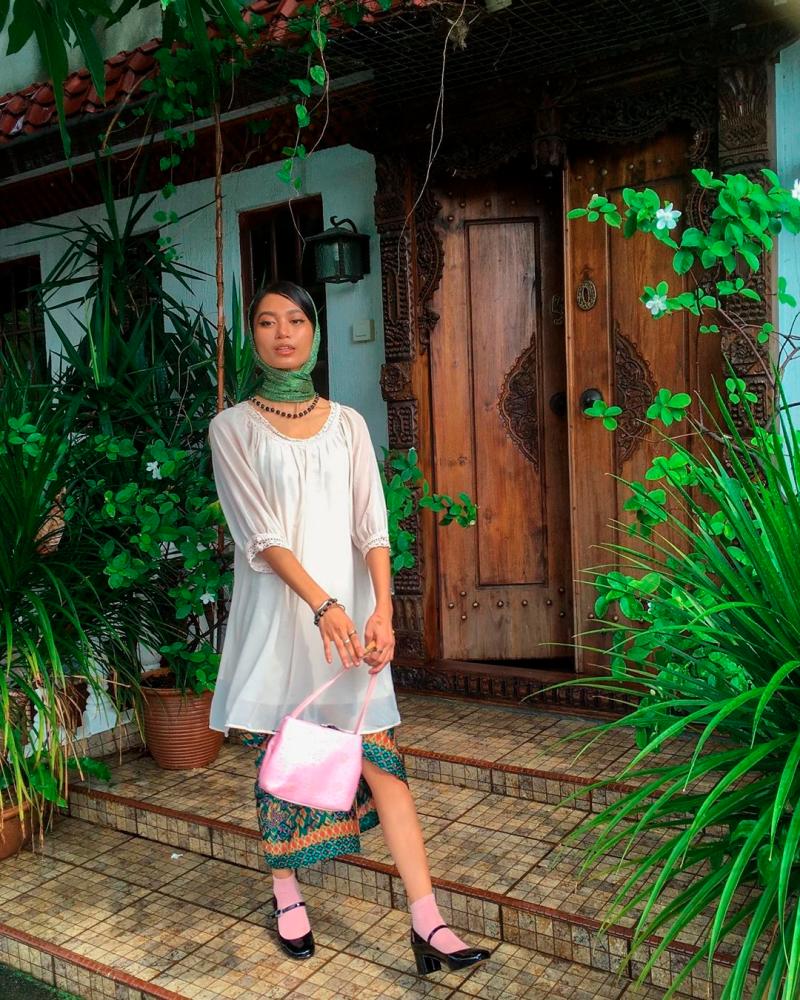THE Instagram bio of 22-year-old sustainable fashion advocate Seri Mizani describes her as a “Nurturer of Nature. A wanderer with an array of secondhand clothes and filled with whimsical gardens of hue”.
She explained: “I’ve always loved dressing up, but after two years of studying fashion and seeing endless rejected garments and wasted fabrics, I felt that I was not aligned with my core values, as my mother who was an environmentalist always taught me to recycle and reuse my clothes ever since I was young.
“Hence a year ago, I decided to take a break from school and use my platform to raise environmental awareness through fashion.”
She added: “There are people who have not acknowledged the importance of sustainability in fashion to start shopping consciously. In fact, the disastrous effects brought by the fashion industry only came to light not so long ago compared to other pollutants.
“I guess we can all agree that Gen-Z is environmentally ‘woke’. We seem to be more interested in thrifting, reconstructing, swapping clothes, and handing things down to our friends rather than buying from retail stores. It has become a way for us to express our own unique individuality through sustainable clothes.”
If one really thinks about it, sustainability is nothing but another way of consumption cheered on by the same unbridled capitalist class.
It’s clear that there is an apparent disparity in consumer dissonance; where everyone gets behind you when you write about buying, but as soon as you write about not buying, no one wants to hear you.
“Everything I do today is still a learning process. I now restrain myself from buying more thrifted clothes, while constantly practicing how I can reuse the clothes I already own,” she added.
Seri has started to slow down the process of truly seeing herself wearing, or in a more euphemistic expression, ‘living’ in a garment by being mindful of her purchase decision.
Ultimately, we as human beings are naturally attracted to beautiful things, it’s not inherently a bad thing, but perhaps protracting that infatuation at first sight can really go an extra mile.
Reevaluating the superficiality of clothes and enhancing their aesthetic for added value is one way to breathe new life into old clothes, and that is exactly what Seri did as she dexterously crafted sumptuous pieces from thrift stores with an utilitarian approach.

She shared: “I take pleasure in educating people through showcasing my lifestyle and outfits on social media to a wider audience, and there, value comes in the form of transparency, information and entertainment.
“Even my love for books, spirituality and astrology has in one way or another, influenced how I perceive fashion today, and that is value in itself.”
There’s a certain artistic value that entails a great deal of effort in DIY culture. Technology has undeniably accelerated the cycle from production to consumption, using the cheapest, easiest and quickest way possible to meet consumers’ desire for clothing that reflects the latest trends.
However, it wasn’t until the early 1990s when the New York Times first coined the term “fast fashion”, saying that “it would only take 15 days for a garment to go from a designer’s brain to being sold on the racks.”
Seri shared: “The most common myths about practising ethical and sustainable fashion is that it’s oftentimes expansive, but it’s not entirely about purchasing from eco-considerate brands, it’s also about cherishing clothes swaps, repairing and restyling preloved clothing.
“Living sustainably through fashion has taught me creativity and innovation that I otherwise wouldn’t learn elsewhere. It’s the little things that make a huge difference.
“From there, you’ll realise that you’re not mindlessly chasing after an endless cycle of fashion trends, because you’re consuming less by sustaining your clothes.”
In other words, fashion is ubiquitous and doesn’t have to cost you anything.
The best and easiest way every consumer can engage in the conversation and contribute to the slow fashion movement is by re-educating themselves on the importance of being sustainable amidst the volatile fashion climate.
“The slow fashion movement is about quality, not quantity. It teaches you to focus less on trends so clothes can be worn much longer. It’s not just about saving the world,” Seri added.



















